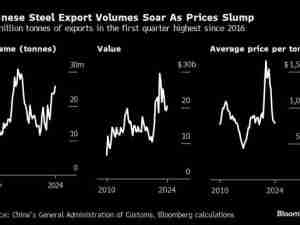The Biden administration unveiled its long-awaited strategy to focus on the Indo-Pacific to counter what it sees as the growing threat posed by China and deepen economic engagement with Asian countries.
The strategy seeks to strengthen the U.S. role in the region, address climate change, prepare for another pandemic and counter what the administration views as China’s aggressive and coercive behavior. A 12-page document describing the plans is the result of months of consultations with allies in the region, a senior administration official said.
“A free and open Indo-Pacific can only be achieved if we build collective capacity for a new age; common action is now a strategic necessity,” according to the document.
The strategy, released as the Biden administration is focused on the immediate tensions with Russia over Ukraine, underscores Washington’s intention to continue ramping up engagement in Asia to counter China’s growing economic and military clout. It also marks the latest in a string of U.S. commitments in the region at a time President Joe Biden has sought to rebuild relationships as a means to strengthen regional alliances and keep up pressure on Beijing on everything from human rights issues to trade.
Earlier this month, the U.S. House of Representatives passed a bill aimed at bolstering U.S. competition with China that includes provisions on investor diversity and counterfeit goods. The U.S. has also made good on a promise to host the Asia-Pacific Economic Cooperation forum in 2023 and plans to hold a special summit with Southeast Asian leaders in Washington in the coming months.
China, by contrast, has sought concrete action to bolster its economic footing, including a bid to join the Comprehensive and Progressive Agreement for Trans-Pacific Partnership left behind by Washington.
Just before leaving office last year, the Trump administration declassified an overarching Indo-Pacific strategy of its own that focused on accelerating India’s rise as a counterweight to Beijing and the ability to defend Taiwan against an attack.
‘Balance of Influence’
The new document should not be considered the administration’s China strategy, the U.S. official said, though its objectives take aim at Beijing’s growing influence in the region.
“Our collective efforts over the next decade will determine whether the PRC succeeds in transforming the rules and norms that have benefitted the Indo-Pacific and the world,” the document says. “Our objective is not to change China but to shape the strategic environment in which it operates, building a balance of influence in the world that is maximally favorable to the United States, our allies and partners, and the interests and values we share.”
The U.S. also seeks to bolster Indo-Pacific security by maintaining peace and stability across the Taiwan Strait, building on coordination with South Korea and Japan to pursue the complete denuclearization of the Korean Peninsula.
Secretary of State Antony Blinken is set to deliver a speech on the strategy in Fiji later Friday.
The U.S. document comes months after many of its key allies across Asia and Europe have unveiled their visions for the region.
The administration official said the White House is aware that Indo-Pacific countries are hoping for deeper economic ties with the U.S. after former President Donald Trump withdrew the country from the Trans-Pacific Partnership.
The U.S. is set to launch negotiations for an economic framework in the coming weeks, though its scope and membership are still to be determined.





